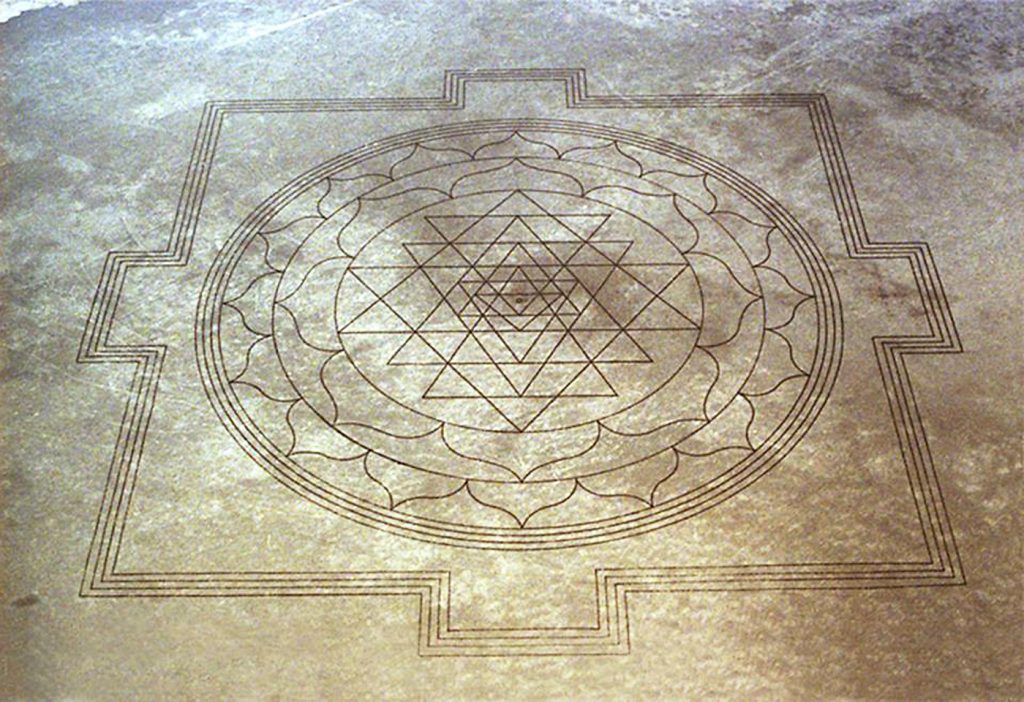
A documentary revealing the truth behind a quarter-mile carving discovered in the Oregon desert in 1990 premiered at ICON Gallery in Fairfield, Iowa, on May 9, 2019. This intriguing story about a Sri Yantra design has captivated the public’s attention for over 27 years. Sri Yantra: The Oregon Desert Mystery, directed by Jim Ansley and narrated by Peter Coyote, is now available to watch free of charge on YouTube.
The large scale-design was first spotted by Air National Guard personnel studying reconnaissance photos taken over the Oregon desert. Guard pilots said it had appeared overnight in a dry lake bed. The carving was geometrically perfect and measured over a quarter of a mile across, with 13 miles of carved lines within its perimeter.
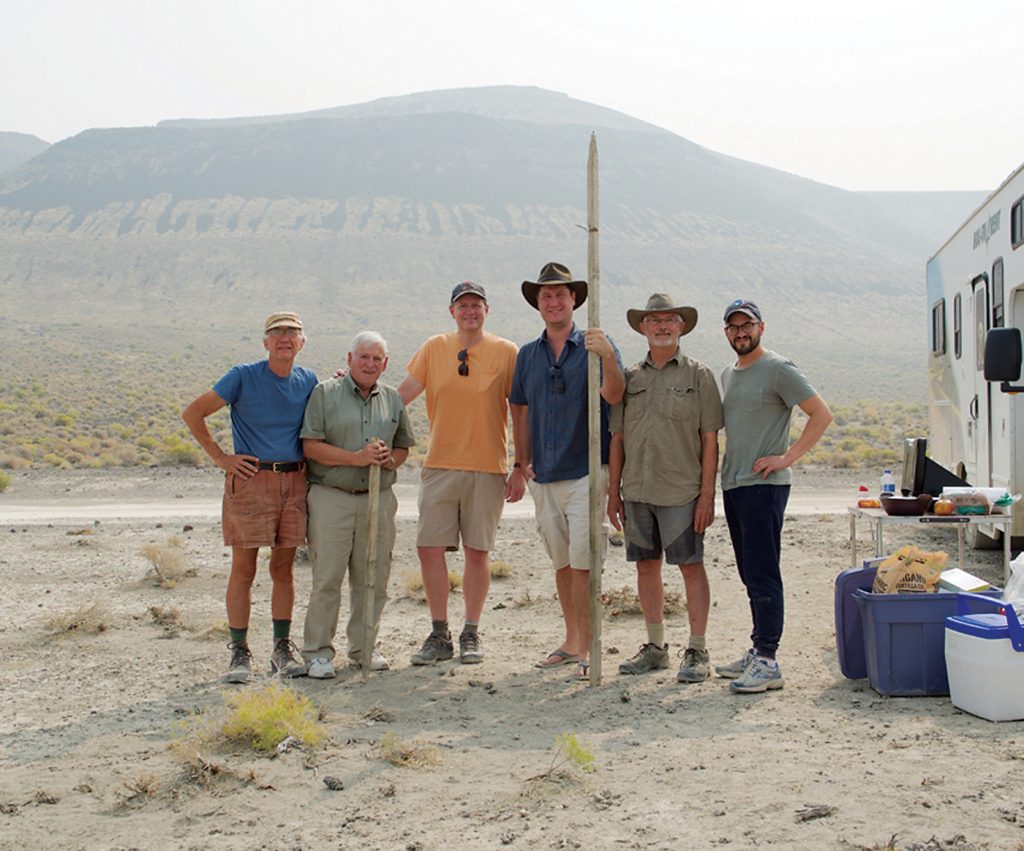
After several weeks, the Guard issued a press release stating it was not a government project and was not made by aliens. The report sparked a series of misleading and untrue news articles alleging it was a government cover-up of an alien event.
When the actual creators came forward—a group of Fairfield artists led by Bill Witherspoon—their story was not believed.
Now with the help of lost video footage, the true story of this majestic and beautiful creation has finally been revealed. Narrated by Peter Coyote, Sri Yantra: The Oregon Desert Mystery tells the truth behind what really happened in the Oregon desert that summer in 1990.
Beyond the Sri Yantra Into the Divine: An Interview with Bill Witherspoon
I recently had the opportunity to interview Bill Witherspoon and was instantly captivated by the magnitude of his intent for the Sri Yantra desert project. His focus for completing it was to put a simple belief to the test: that art, as technology, creates powerful influence. Bill wanted to amplify a very personal inner experience, and that was all. Sitting with him gave me a sense of his humility and intense devotion to the process.
With a curious and intimate approach, Bill brought the power and knowledge of an ancient design to the American West. The Sri Yantra’s harmony, along with Bill’s purity of intention, continues to manifest itself through this awe-inspiring documentary.
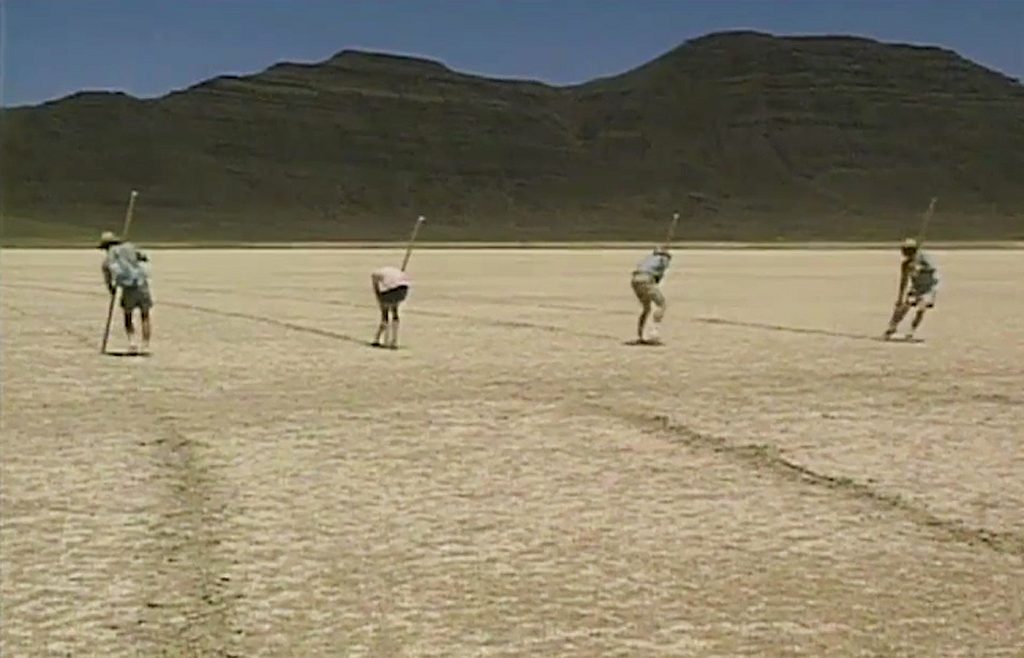
Why carve a Sri Yantra into the desert?
Bill Witherspoon: I get asked why a lot. In the middle of the Sri Yantra is the bindu, a point of origin. This point is the transcendent. It is being and is loaded with life. A yantra symbol is said to represent deities, or laws of nature. The terms are interchangeable. From the yantra emerges a lively, positive influence. Being a meditator, I thought, wouldn’t it be interesting to enhance the meditative experience? To amplify it? Then I thought, I want to live in the bindu. How big of a bindu do I want to live in? Nine feet sounds good . . . and then I went from there.
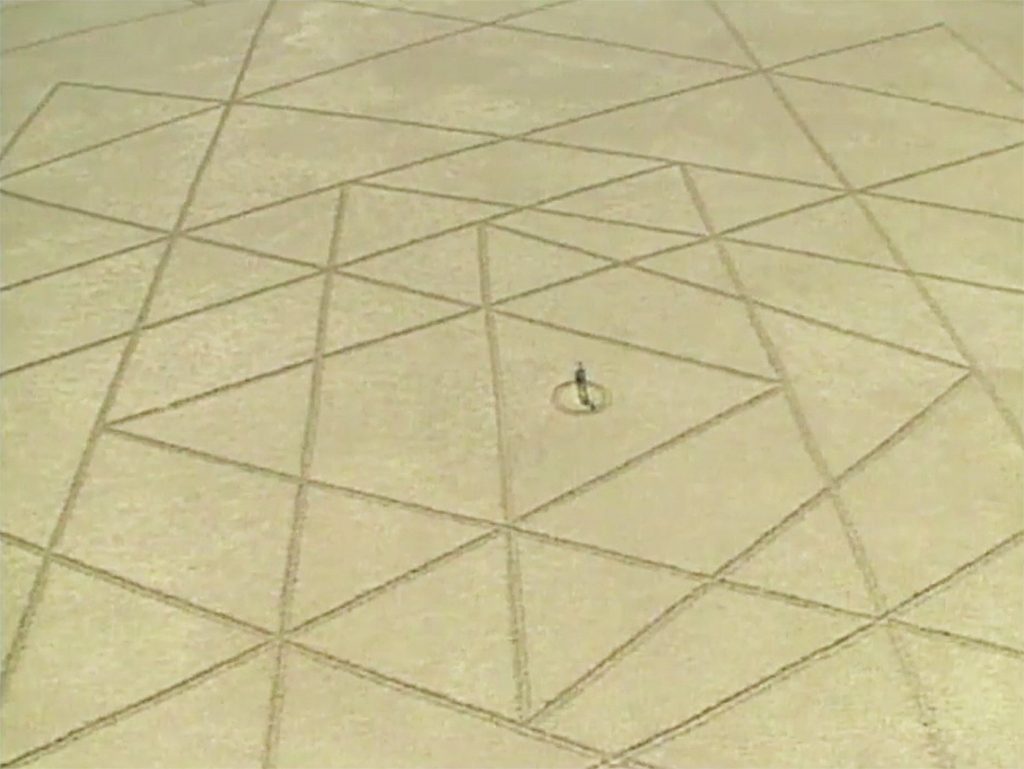
What was living in the bindu like?
People always ask what it was like, and I have a very difficult time giving an answer or knowing if I even have one. Even right after, I don’t remember exactly how long or how many days I stayed there, but I do remember I went outside of the bindu and sat in various triangles to meditate, and I would see that the meditation would change. It had a different flavor.
There is not much else to report, but having nothing to report doesn’t mean nothing happened. All it means is that the language, the intellect, mind, and ego are not able to grasp or communicate what happened. I tried to explain in a paper I wrote a couple of years after, called “Art as Technology.” I have been trying to hammer in that idea for years, that art is technology. Maybe reading a part from there will help:
“It must have been smoldering for a long time. Why it broke into flames when it did is uncertain. Probably she [the Divine] had something to do with it. Why, though? She had been patient so long. Maybe too long. Perhaps she saw an opening, an opportunity. I had been calling her for some time and I’m sure she had answered, but I didn’t hear well … But now, with everything gone, her voice is everywhere, soft and quiet.” (Art and Technology)
What does the experience of living in the bindu compare to?
Creating that Sri Yantra was a major benchmark experience for me. An earlier benchmark was a near-death experience in 1961 or 1962. I was trying to run a river in a homemade floatable device, but I went over a waterfall and got pinned to the bottom of the river and drowned. I left my body and felt quite happy about it. Fortunately—or unfortunately because I didn’t want to return—I somehow got thrown back on top of the device, but I don’t remember struggling to do so. I vomited a lot of water when that happened, and it was a powerful experience. It had a lot of impact on me. Prior to that, I often flirted with death by climbing glaciers or driving my motorcycle really fast, but after that experience I wasn’t afraid of death. I realized I didn’t need to flirt with death anymore. For me, living in the bindu was a peak experience beyond that one. It set a bar of experience that’s been with me ever since.
Do you ever return to the old location of the Sri Yantra bindu?
Yes, from time to time. It’s a ways out of the way, but I do go back. I spend a lot of time in the desert.
Why the Sri Yantra?
Research really kicked it off. A friend asked if I could make one, so I looked into it and got instructions for how to build it from an old temple in Badrinath, India, that has been making Sri Yantras for thousands of years the traditional way. I did everything I could to follow the canons. I learned that this piece was not a place for me to experiment. I wanted to do it right out of respect, and also because of the text. The tradition says that if you do it wrong you are in big trouble … you open the possibility of damaging yourself and the environment. For me, this warning can translate as “if you don’t do it right, you have not created the proper resonant structure.” Basically, you have screwed with the harmonics of it.
Were you intimidated by the requirements of creating a Sri Yantra?
There are different ways to talk about it, but the truth is, it is absolutely impossible to make the Sri Yantra perfect. People will claim they have computer programs to do the math, but all they do is narrow it down closer and closer until it is so close you cannot tell, but it is still not perfect.
A paper I ran into during my research by a Scottish math professor states that it’s an irrational figure like pi. It cannot be resolved. It is infinite and will go on forever. This means the error will go on indefinitely, so when you make one, there will always be an error.
In the ancient text, you are told to make this thing right. What does this do? It creates frustration in the mind. I was serious about creating it, but when you take it seriously and know it’s not possible to do so accordingly, how do you resolve that? It’s like a koan—the question of the sound of one hand clapping. By nature, this is completely unanswerable. You can’t answer the question, but you can frustrate the intellect by asking it anyway. You can frustrate the intellect so much that it shuts down, and what happens? Mind, ego, and intellect all shut down and being begins to flood the system.
The koan is a technology for shutting down that part of our system that prevents us from truth. There is no difference between a koan and this irresolvable requirement associated with [Sri Yantra’s] irrational figure. I realized that the intention behind it is what’s powerful. The purpose for building it. I didn’t do it for fame or promoting our work. None of us did. I did it to experience life in the bindu. We charged it with our intention during the work.
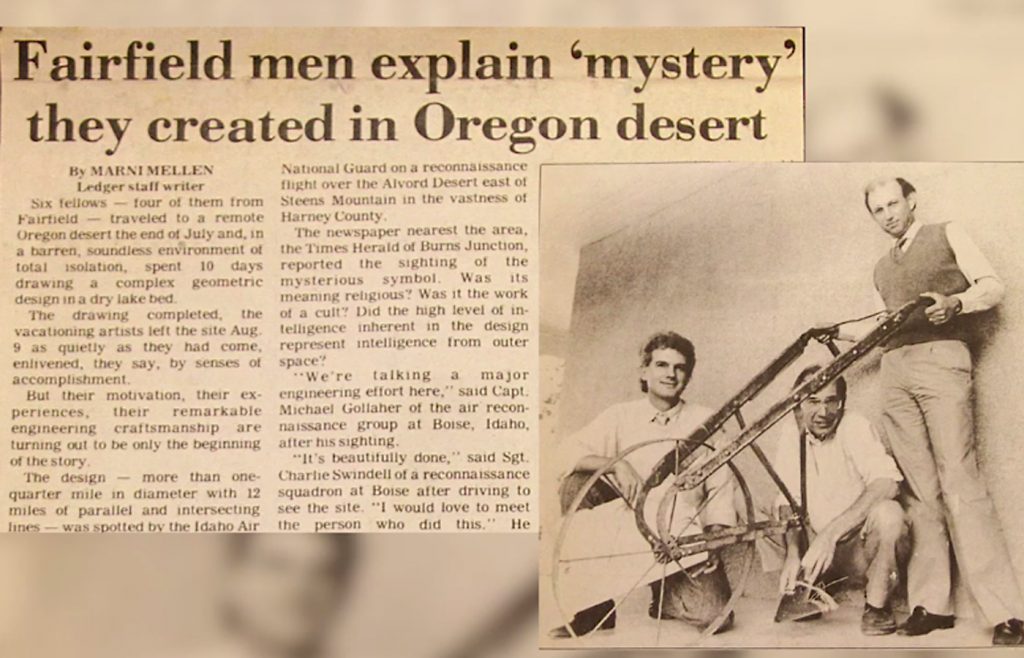
What’s your advice for those interested in creating a Sri Yantra?
Three things. 1) Be totally sincere and totally careful not to associate this with economic gain. I believe that would be a big mistake. 2) Use caution in your sources. Go to the oldest tradition you can find and study that. Forget about people like me or others who have done something similar. Go as far back as you possibly can. That means old texts in translation, old images, all that. I think that is the safest way to become informed. 3) If your intention is correct, and you are deeply committed and sincere in what you are doing, not for personal gain, the information and knowledge you need will want to find you. It comes to you.
Do you miss living in the bindu?
The experience was strong enough. It had enough wholeness in it that it increased a longing. That’s the word—longing. I didn’t miss it, but longed for it. That’s the best English word I can think of. Not for the pure abstraction of the absolute, but for the divine mother, or father, or whichever name you choose to use. This is something you can long for. You can’t long for the absolute. The experience of living in the bindu is so immense that you can’t go from there. You want more. But once you get to the infinite, there is no bigger. You just want more infinite. It created a taste for something I can’t let go of. It was a real mouthful and takes time to chew.
